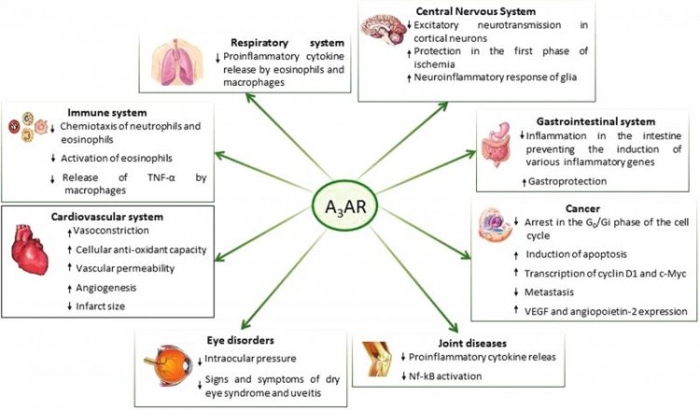Research project
Kinetics for Drug Discovery: a Case for the Adenosine A3 receptor
Supervisor: Lizi Xia
- Contact
- Laura Heitman
Background
Adenosine is a local hormone with essential functions in human physiology. It binds to 4 evolutionary well-conserved receptor subtypes that are ubiquitously expressed: A1, A2A, A2B, and A3. Among these GPCRs, the A3 subtype has been the latest defined (in 1990’s), and it may be a good drug target and biologic marker given its overexpression in inflammatory and cancer cells, compared with low levels of expression found in healthy cells.
The adenosine A3 receptor has been associated with cerebroprotection and cardioprotection, as well as modulation of cellular growth upon its selective activation. On the other hand, its inhibition by selective antagonists has been reported to be potentially useful in the treatment of pathological conditions including glaucoma, inflammatory diseases, and cancer.
For other GPCRs it has been shown that optimal binding kinetics, next to a high affinity of a ligand, can result in more desirable pharmacological profiles, such as a better efficacy and improved target selectivity. Hence, the purpose of this project is to provide proof of concept that a ligand’s binding kinetics can be determined and optimized for the A3 receptor using a structure-‘kinetic’-relationship (SKR) approach. However, existing in vitro assays mostly evaluate a ligand-receptor interaction under equilibrium conditions, while a kinetic read-out could be more predictive for the in vivo outcome. Thus, novel kinetic assays need to be developed for the A3 receptor.
Progress so far
With the help of the colleagues in our group, all the radioligand binding assays have been set up and optimized using the radiolabelled antagonist [3H] PSB-11.
At this moment an existing library with a great number of A3 receptor agonists and antagonists is being screened in both equilibrium and kinetic approaches. Simultaneously, synthetic efforts to increase the screening library are under way, hoping to find ligands with decent kinetic profiles and also to provide a comprehensive SKR for the A3 receptor.
All the above mentioned objectives cannot be obtained without hardworking and brilliant master and bachelor students.
You can help me to answer the following questions:
- Can we use better technology for the kinetic assays on adenosine A3 receptors?
- Can we find long-residence time ligands on Adenosine A3 receptors?
- Can we determine the structure-‘kinetic’-relationship (SKR) of Adenosine A3 ligands?
- Can we confirm that a ligand with good kinetic profile leads to good target selectivity and better efficacy?
Techniques:
- Cell culture
- Radioligand binding assays
- Functional assays

